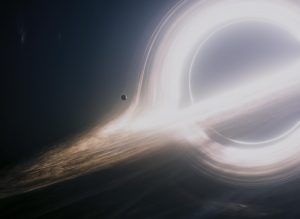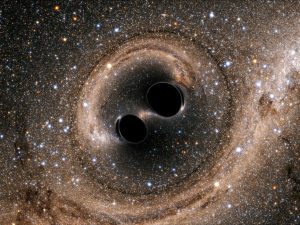
La Relatividad General es una teoría sobre el espacio, el tiempo y la gravitación formulada por Albert Einstein en 1915. En esta teoría, el espacio-tiempo se considera una entidad dotada de propiedades físicas. Las ecuaciones de Einstein relacionan en forma no lineal la geometría del espacio-tiempo y el contenido de materia en el mismo. Dada una distribución de energía y momento, resolver las ecuaciones de Einstein implica determinar la curvatura del espacio-tiempo y pues, los efectos de la gravedad sobre la materia. En el régimen de campo débil, la Relatividad General ha podido explicar exitosamente diversos fenómenos. En el Sistema Solar, las predicciones de la teoría han sido evaluadas exitosamente. Asimismo, la teoría ofrece una descripción precisa de la mayor parte de los fenómenos astrofísicos y cosmológicos. Entre estos, en régimen de campo fuerte, se destaca la predicción de la a existencia de ondas gravitacionales, la cual ha sido recientemente testeada con la detección de la fusión de un sistema binario de agujeros negros.
En el grupo GARRA se investigan varios aspectos relacionados con la Relatividad General y teorías alternativas de la gravitación. Por un lado se realizan estudios en Relatividad Numérica enfocad os en ondas gravitacionales, sistemas binarios, estrellas de neutrones, y discos de acreción; para éstos se utilizan herramientas de cálculos tales como el Einstein Toolkit. Asimismo se llevan a cabo investigaciones en cosmología relativista, en particular, analizando los efectos de la expansión sobre sistemas astrofísicos locales como galaxias, clusters de galaxias, y su entorno. Esto incluye también estudios teóricos sobre las propiedades causales de agujeros negros cosmológicos, horizontes aparentes, campos electromagnéticos en universos en expansión, y termodinámica de universos en expansión.
os en ondas gravitacionales, sistemas binarios, estrellas de neutrones, y discos de acreción; para éstos se utilizan herramientas de cálculos tales como el Einstein Toolkit. Asimismo se llevan a cabo investigaciones en cosmología relativista, en particular, analizando los efectos de la expansión sobre sistemas astrofísicos locales como galaxias, clusters de galaxias, y su entorno. Esto incluye también estudios teóricos sobre las propiedades causales de agujeros negros cosmológicos, horizontes aparentes, campos electromagnéticos en universos en expansión, y termodinámica de universos en expansión.

Por otro lado, se investigan distintas implicaciones astrofísicas de teorías alternativas de la gravitación, tales como gravedad-f(R) y una teoría escalar, tensorial y vectorial de la gravitación; se han modelado discos de acreción y chorros de partículas relativistas (jets) en el entorno de soluciones de agujeros negros en estas teorías. También, se han derivado soluciones de estrellas de neutrones en teorías modificadas de la gravedad.
General Relativity is a theory about space, time and gravitation formulated by Albert Einstein in 1915. In this theory, spacetime is considered as an entity endowed with physical properties. The Einstein equations relate in a non-linear way the geometry of spacetime and its matter content. Given a distribution of energy and momentum, solving Einstein equations implies determining the curvature of spacetime and thus, the effects of gravity on matter. In the weak field regime, General Relativity has successfully explained many phenomena. In the Solar System, the predictions of the theory have been completely verified. Furthermore, the theory provides an adequate description of most astrophysical and cosmological phenomena. Among these, in the strong gravity regime, stands out the prediction of the existence the gravitational waves which was recently tested with the detection of the merger of a binary system of black holes.
In GARRA group, several aspects related to General Relativity and alternative theories of gravity are investigated. On the one hand, it is done research on Numerical Relativity basically focused on gravitational waves, binary systems, neutron stars, and accretion disks; these studies are performed using numerical tools such as the Einstein Toolkit. Besides, there are also investigations on relativistic cosmology, in particular, on the effects of the cosmological expansion on local systems such as galaxies, clusters of galaxies, and their environment. It also includes theoretical studies on the causal properties of cosmological black holes, apparent horizons, electromagnetic fields in expanding universes, and thermodynamics in expanding universes. On the other hand, it is investigated the astrophysical implications of alternative theories of gravity such as f(R)-gravity, and Scalar-Tensor-Vector Gravity; models of accretion disks and jets around black solutions in these theories were computed. Neutron star solutions were also derived in these modified theories of gravity.
Créditos de las imágenes
Gargantua1
Creator:Paramount Credit:Paramount
Copyright:© 2014 Warner Bros. Entertainment, Inc. and Paramount Pictures Corporation. All Rights Reserved.
Albert Einstein
Photograph of Albert Einstein in his office at the University of Berlin, published in the USA in 1920. Dominio público
LIGOTA
Credit: Simulating Extreme Spacetimes (SXS) Project
